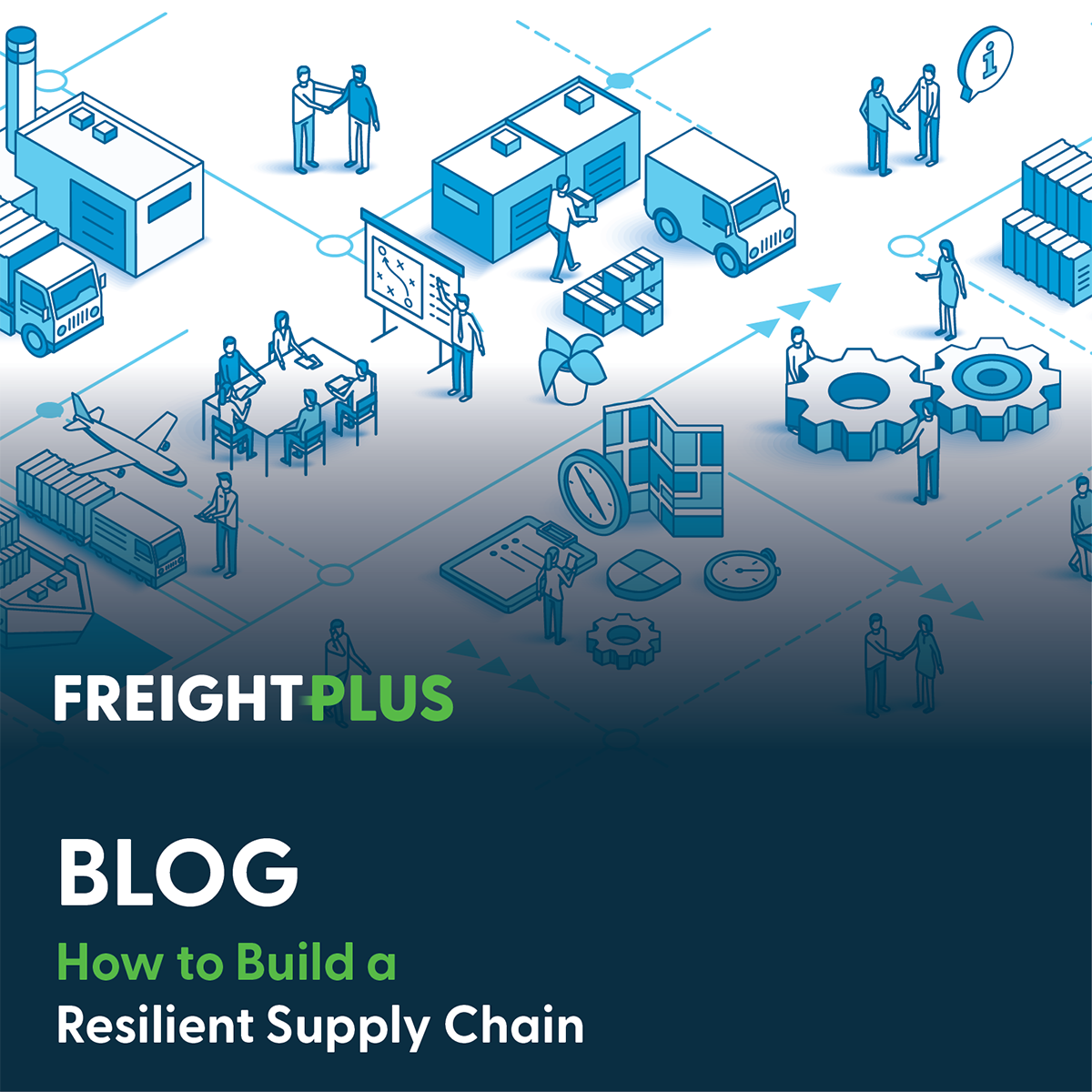A resilient supply chain is the ability to anticipate, adapt to, and recover from disruptions while maintaining business continuity. In today's fast-paced and unpredictable environment, disruptions—whether due to natural disasters, political instability, or unforeseen global events—can significantly impact the flow of goods and services.
Resilient supply chains are flexible, adaptive, and designed to bounce back quickly from setbacks. It integrates risk management strategies, robust planning, and technological solutions to minimize disruptions and recover swiftly. Companies that prioritize resilience can navigate uncertainties effectively and continue to meet customer expectations even in the face of adversity.
This blog will explore the critical strategies that can help businesses build a resilient supply chain, ensuring they are prepared to manage disruptions, maintain service levels, and navigate supply chain uncertainties effectively.
Carrier Network Diversification
A fundamental aspect of building a resilient transportation strategy is ensuring diversity within the carrier network. Relying on a single carrier or a limited set of carriers within one region can expose a business to increased risks during disruptions, such as labor strikes, natural disasters, or shifts in trade policies. By diversifying carriers across various regions and service levels or working with a partner who has access to a diverse carrier network, businesses can better manage potential disruptions, improve service reliability, and maintain continuity in shipments. A well-diversified carrier network provides flexibility, enhances competitiveness, and ensures a steady flow of deliveries regardless of unforeseen challenges.
The Role of Technology in a Resilient Supply Chain
Leveraging technology is essential for building a resilient supply chain. Advanced tools such as Artificial Intelligence (AI), Machine Learning (ML), and the Internet of Things (IoT) enable businesses to enhance visibility and gain real-time insights into their supply chain operations. By utilizing these technologies, companies can track shipments from origin to destination, monitor progress, and predict potential disruptions before they affect operations. These technologies allow businesses to respond proactively, optimize operations, and minimize the impact of delays or issues. Integrating AI, ML, and IoT provides greater control, transparency, and accountability, making it easier to adjust strategies in real time and maintain supply chain resilience during unpredictable disruptions.
Building Strong Relationships with Suppliers
Resilient supply chains are built on strong, collaborative relationships with suppliers. Establishing trust and open communication with suppliers can lead to more effective problem-solving during times of disruption. Companies that foster long-term partnerships with their suppliers are often better positioned to navigate challenges together, whether that involves adjusting delivery schedules or finding alternative sourcing solutions.
Establishing Inventory Buffer Zones
Inventory management is a critical aspect of a resilient supply chain. Maintaining strategic inventory levels, especially for high-demand or critical products, ensures that businesses are not caught off guard by unexpected shortages. Buffer zones or safety stock can act as a cushion during periods of high demand or supply delays. However, finding the right balance is key, as excessive inventory can lead to increased costs, while insufficient stock can disrupt operations.
Supply Chain Transparency and Visibility
Increased transparency and visibility throughout the supply chain allow businesses to quickly identify bottlenecks or issues before they escalate. Real-time tracking and monitoring systems can provide a comprehensive view of the entire supply chain, from suppliers to customers. This level of visibility enables quicker decision-making, better risk management, and more efficient operations.
Risk Management and Contingency Planning
A resilient supply chain requires proactive risk management. Businesses must regularly assess potential risks, such as economic shifts, regulatory changes, or environmental disasters, that could impact their operations. Developing a comprehensive risk management strategy, along with contingency plans for various scenarios, ensures that businesses are prepared to handle disruptions when they occur. These plans should outline specific actions, responsibilities, and resources required to maintain operations during challenging times.
Agility and Flexibility
Flexibility is a hallmark of a resilient supply chain. The ability to quickly adapt to changing conditions, whether through shifting production schedules, rerouting shipments, or finding alternative suppliers, is essential for minimizing the impact of disruptions. Agility in the supply chain enables companies to adjust quickly to customer demand fluctuations, market conditions, and unforeseen events, ensuring they remain competitive and responsive.
Conclusion
Building a resilient supply chain is an ongoing process that requires careful planning, adaptability, and continuous improvement. By focusing on diversification, technology integration, supplier collaboration, inventory management, transparency, and risk preparedness, businesses can better withstand disruptions and maintain operational efficiency. Companies that prioritize supply chain resilience will be better positioned to navigate challenges and emerge stronger in the face of adversity.



